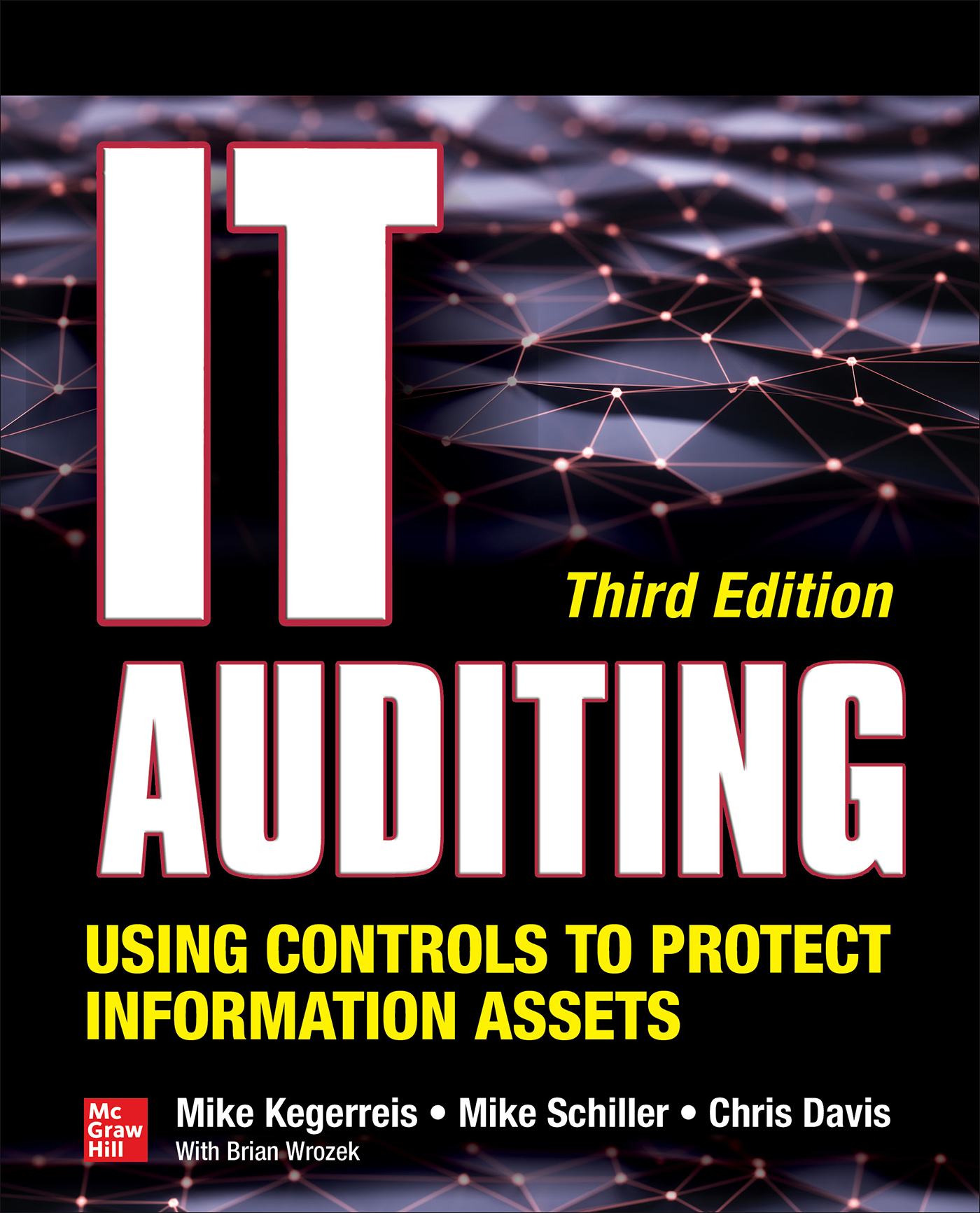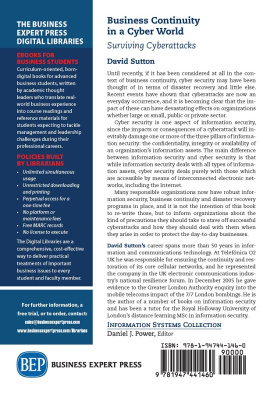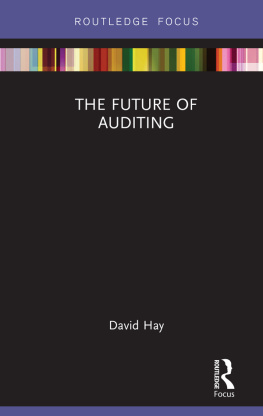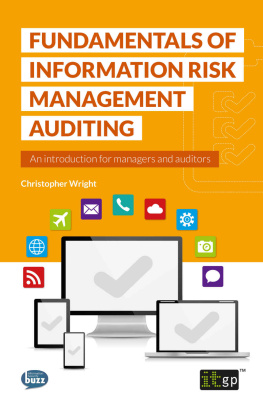Mike Kegerreis - IT Auditing Using Controls to Protect Information Assets
Here you can read online Mike Kegerreis - IT Auditing Using Controls to Protect Information Assets full text of the book (entire story) in english for free. Download pdf and epub, get meaning, cover and reviews about this ebook. year: 2020, publisher: McGraw-Hill Education, genre: Computer / Science. Description of the work, (preface) as well as reviews are available. Best literature library LitArk.com created for fans of good reading and offers a wide selection of genres:
Romance novel
Science fiction
Adventure
Detective
Science
History
Home and family
Prose
Art
Politics
Computer
Non-fiction
Religion
Business
Children
Humor
Choose a favorite category and find really read worthwhile books. Enjoy immersion in the world of imagination, feel the emotions of the characters or learn something new for yourself, make an fascinating discovery.

- Book:IT Auditing Using Controls to Protect Information Assets
- Author:
- Publisher:McGraw-Hill Education
- Genre:
- Year:2020
- Rating:3 / 5
- Favourites:Add to favourites
- Your mark:
- 60
- 1
- 2
- 3
- 4
- 5
IT Auditing Using Controls to Protect Information Assets: summary, description and annotation
We offer to read an annotation, description, summary or preface (depends on what the author of the book "IT Auditing Using Controls to Protect Information Assets" wrote himself). If you haven't found the necessary information about the book — write in the comments, we will try to find it.
IT Auditing Using Controls to Protect Information Assets — read online for free the complete book (whole text) full work
Below is the text of the book, divided by pages. System saving the place of the last page read, allows you to conveniently read the book "IT Auditing Using Controls to Protect Information Assets" online for free, without having to search again every time where you left off. Put a bookmark, and you can go to the page where you finished reading at any time.
Font size:
Interval:
Bookmark:


Copyright 2020 by McGraw-Hill Education. All rights reserved. Except as permitted under the United States Copyright Act of 1976, no part of this publication may be reproduced or distributed in any form or by any means, or stored in a database or retrieval system, without the prior written permission of the publisher, with the exception that the program listings may be entered, stored, and executed in a computer system, but they may not be reproduced for publication.
ISBN: 978-1-26-045323-2
MHID: 1-26-045323-5
The material in this eBook also appears in the print version of this title: ISBN: 978-1-26-045322-5, MHID: 1-26-045322-7.
eBook conversion by codeMantra
Version 1.0
All trademarks are trademarks of their respective owners. Rather than put a trademark symbol after every occurrence of a trademarked name, we use names in an editorial fashion only, and to the benefit of the trademark owner, with no intention of infringement of the trademark. Where such designations appear in this book, they have been printed with initial caps.
McGraw-Hill Education eBooks are available at special quantity discounts to use as premiums and sales promotions or for use in corporate training programs. To contact a representative, please visit the Contact Us page at www.mhprofessional.com.
All trademarks or copyrights mentioned herein are the possession of their respective owners and McGraw-Hill Education makes no claim of ownership by the mention of products that contain these marks.
Information has been obtained by McGraw-Hill Education from sources believed to be reliable. However, because of the possibility of human or mechanical error by our sources, McGraw-Hill Education, or others, McGraw-Hill Education does not guarantee the accuracy, adequacy, or completeness of any information and is not responsible for any errors or omissions or the results obtained from the use of such information.
TERMS OF USE
This is a copyrighted work and McGraw-Hill Education and its licensors reserve all rights in and to the work. Use of this work is subject to these terms. Except as permitted under the Copyright Act of 1976 and the right to store and retrieve one copy of the work, you may not decompile, disassemble, reverse engineer, reproduce, modify, create derivative works based upon, transmit, distribute, disseminate, sell, publish or sublicense the work or any part of it without McGraw-Hill Educations prior consent. You may use the work for your own noncommercial and personal use; any other use of the work is strictly prohibited. Your right to use the work may be terminated if you fail to comply with these terms.
THE WORK IS PROVIDED AS IS. McGRAW-HILL EDUCATION AND ITS LICENSORS MAKE NO GUARANTEES OR WARRANTIES AS TO THE ACCURACY, ADEQUACY OR COMPLETENESS OF OR RESULTS TO BE OBTAINED FROM USING THE WORK, INCLUDING ANY INFORMATION THAT CAN BE ACCESSED THROUGH THE WORK VIA HYPERLINK OR OTHERWISE, AND EXPRESSLY DISCLAIM ANY WARRANTY, EXPRESS OR IMPLIED, INCLUDING BUT NOT LIMITED TO IMPLIED WARRANTIES OF MERCHANTABILITY OR FITNESS FOR A PARTICULAR PURPOSE. McGraw-Hill Education and its licensors do not warrant or guarantee that the functions contained in the work will meet your requirements or that its operation will be uninterrupted or error free. Neither McGraw-Hill Education nor its licensors shall be liable to you or anyone else for any inaccuracy, error or omission, regardless of cause, in the work or for any damages resulting therefrom. McGraw-Hill Education has no responsibility for the content of any information accessed through the work. Under no circumstances shall McGraw-Hill Education and/or its licensors be liable for any indirect, incidental, special, punitive, consequential or similar damages that result from the use of or inability to use the work, even if any of them has been advised of the possibility of such damages. This limitation of liability shall apply to any claim or cause whatsoever whether such claim or cause arises in contract, tort or otherwise.
To my family and friendsthank you for all of your support.
Mike K.
To Steph, Grant, and Katethank you for being the brightest spots in my life.
Mike S.
Mike Kegerreis, CISSP, has over 20 years of experience in IT, including 11 as a security professional. Mike graduated from Texas A&M University and spent 12 years as a software developer before moving into information security. He has participated in SANS course and certification development; has spoken at venues such as InfoSec World, CAMP IT, the University of Texas at Dallas, and the Dallas IIA Super Conference; and in a prior life, developed human interfaces for oilfield systems in West Texas. A lifelong fan of golf, Mike also enjoys playing a round whenever he can, and his favorite course as of now is the TPC Las Vegas. Mike is currently the lead security architect at Texas Instruments.
Mike Schiller, CISA, is the chief information security officer at Texas Instruments and has more than 15 years of experience in the IT audit field, including as the IT audit director at Texas Instruments and Sabre. He has been a speaker at conferences such as CACS, InfoSec World, and ASUG (Americas SAP Users Group); an instructor of IT audit curriculum at Southern Methodist University; and part of the writing team for all three editions of IT Auditing: Using Controls to Protect Information Assets. Mike graduated from Texas A&M University. He enjoys watching baseball in his spare time and has attended games in every Major League stadium. His baseball allegiance is to the Texas Rangers and Cincinnati Reds.
Chris Davis drives product and architecture strategy for customers building secure and compliant hybrid cloud infrastructures using Caveonix. He has trained and presented in information security, advanced computer forensic analysis, hardware security design, auditing, risk management, and certification curriculum for enterprise and governments worldwide. He has held positions at Oracle, Amazon, VMware, VCE, Critical Start, Accudata Systems, ForeScout Technologies, and Texas Instruments. Chris holds a bachelors degree in Nuclear Engineering Technologies from Thomas Edison and a masters in business from the University of Texas at Austin. Chris has written and/or contributed to several books covering information security, forensics, and auditing, a few of which are Hacking Exposed: Computer Forensics (first and second editions), IT Auditing: Using Controls to Protect Information Assets (first and second editions), Anti-Hacker Toolkit (second and third editions), and The Computer Security Handbook (fifth and sixth editions).
Brian Wrozek is a seasoned cybersecurity executive with 20+ years of experience in IT and information security and management. As vice president of corporate security, risk and compliance management, and physical security at Optiv, Brian oversees all corporate security functions, including cyber operations, incident response, vulnerability management, and security governance activities. As an adjunct professor in the Satish and Yasmin Gupta College of Business at the University of Dallas, Brian teaches graduate-level cybersecurity courses. He is also a board member for the Texas CISO Council, an Information Sharing and Analysis Organization (ISAO).
Bobby E. Rogers is an information security engineer working as a contractor for Department of Defense agencies, helping to secure, certify, and accredit their information systems. His duties include information system security engineering, risk management, and certification and accreditation efforts. He retired after 21 years in the U.S. Air Force, serving as a network security engineer and instructor, and has secured networks all over the world. Bobby has a masters degree in information assurance (IA) and is pursuing a doctoral degree in cybersecurity from Capitol Technology University in Maryland. His many certifications include CISSP-ISSEP, CEH, and MCSE: Security, as well as the CompTIA A+, Network+, Security+, and Mobility+ certifications.
Font size:
Interval:
Bookmark:
Similar books «IT Auditing Using Controls to Protect Information Assets»
Look at similar books to IT Auditing Using Controls to Protect Information Assets. We have selected literature similar in name and meaning in the hope of providing readers with more options to find new, interesting, not yet read works.
Discussion, reviews of the book IT Auditing Using Controls to Protect Information Assets and just readers' own opinions. Leave your comments, write what you think about the work, its meaning or the main characters. Specify what exactly you liked and what you didn't like, and why you think so.



